-
82 results in Exploration of Foods and FoodomicsSort byMost Downloaded
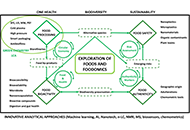 Future trends in Food Science and Foodomics: a perspective view by the Editorial Team of Exploration of Foods and FoodomicsOpen AccessPerspectiveIn this perspective article, several internationally recognized experts, members of the editorial team of this journal, discuss a selection of current hot topics identified in Food Science and Foodo [...] Read more.Elena Ibáñez ... Alejandro CifuentesPublished: November 28, 2024 Explor Foods Foodomics. 2024;2:707–766
Future trends in Food Science and Foodomics: a perspective view by the Editorial Team of Exploration of Foods and FoodomicsOpen AccessPerspectiveIn this perspective article, several internationally recognized experts, members of the editorial team of this journal, discuss a selection of current hot topics identified in Food Science and Foodo [...] Read more.Elena Ibáñez ... Alejandro CifuentesPublished: November 28, 2024 Explor Foods Foodomics. 2024;2:707–766
DOI: https://doi.org/10.37349/eff.2024.00060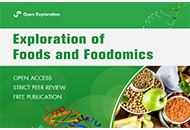 AI-powered revolution in plant sciences: advancements, applications, and challenges for sustainable agriculture and food securityOpen AccessReviewArtificial intelligence (AI) is revolutionizing plant sciences by enabling precise plant species identification, early disease diagnosis, crop yield prediction, and precision agriculture optimizatio [...] Read more.Deependra Kumar Gupta ... Ajay Kumar SinghPublished: August 06, 2024 Explor Foods Foodomics. 2024;2:443–459
AI-powered revolution in plant sciences: advancements, applications, and challenges for sustainable agriculture and food securityOpen AccessReviewArtificial intelligence (AI) is revolutionizing plant sciences by enabling precise plant species identification, early disease diagnosis, crop yield prediction, and precision agriculture optimizatio [...] Read more.Deependra Kumar Gupta ... Ajay Kumar SinghPublished: August 06, 2024 Explor Foods Foodomics. 2024;2:443–459
DOI: https://doi.org/10.37349/eff.2024.00045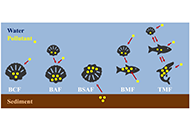 Bioaccumulation of environmental pollutants and marine toxins in bivalve molluscs: a reviewOpen AccessReviewSeafood is both nutritionally and economically significant, with bivalve molluscs being particularly valuable for monitoring environmental pollutants due to their filter-feeding nature and ability t [...] Read more.Clara Ochoa-Esteso ... María Jesús Lerma-GarcíaPublished: December 03, 2024 Explor Foods Foodomics. 2024;2:788–809
Bioaccumulation of environmental pollutants and marine toxins in bivalve molluscs: a reviewOpen AccessReviewSeafood is both nutritionally and economically significant, with bivalve molluscs being particularly valuable for monitoring environmental pollutants due to their filter-feeding nature and ability t [...] Read more.Clara Ochoa-Esteso ... María Jesús Lerma-GarcíaPublished: December 03, 2024 Explor Foods Foodomics. 2024;2:788–809
DOI: https://doi.org/10.37349/eff.2024.00062
This article belongs to the special issue Food Contaminants: Analysis, Occurrence and Risk Assessment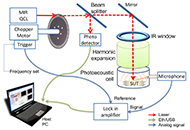 Exploring the potential of laser photoacoustic spectroscopy (LPAS) for predicting amylose content in rice flourOpen AccessOriginal ArticleAim: Rice, one of the most widely consumed staple foods globally, relies on amylose content for its quality, impacting cooking, digestibility, and health properties. Conventional amylose determin [...] Read more.Florinda Artuso ... Fabio PollastronePublished: September 10, 2024 Explor Foods Foodomics. 2024;2:542–554
Exploring the potential of laser photoacoustic spectroscopy (LPAS) for predicting amylose content in rice flourOpen AccessOriginal ArticleAim: Rice, one of the most widely consumed staple foods globally, relies on amylose content for its quality, impacting cooking, digestibility, and health properties. Conventional amylose determin [...] Read more.Florinda Artuso ... Fabio PollastronePublished: September 10, 2024 Explor Foods Foodomics. 2024;2:542–554
DOI: https://doi.org/10.37349/eff.2024.00050
This article belongs to the special issue Metrological Aspects in the Analysis of Nutrients, Functional Compounds, Additives and Contaminants in Food and Feed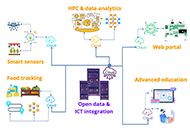 From data to nutrition: the impact of computing infrastructure and artificial intelligenceOpen AccessPerspectiveThis article explores the significant impact that artificial intelligence (AI) could have on food safety and nutrition, with a specific focus on the use of machine learning and neural networks for d [...] Read more.Pierpaolo Di Bitonto ... Sabina TangaroPublished: December 03, 2024 Explor Foods Foodomics. 2024;2:810–829
From data to nutrition: the impact of computing infrastructure and artificial intelligenceOpen AccessPerspectiveThis article explores the significant impact that artificial intelligence (AI) could have on food safety and nutrition, with a specific focus on the use of machine learning and neural networks for d [...] Read more.Pierpaolo Di Bitonto ... Sabina TangaroPublished: December 03, 2024 Explor Foods Foodomics. 2024;2:810–829
DOI: https://doi.org/10.37349/eff.2024.00063
This article belongs to the special issue Metrological Aspects in the Analysis of Nutrients, Functional Compounds, Additives and Contaminants in Food and Feed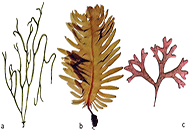 Atlantic algae as food and their extractsOpen AccessReviewAmong the species of the rich algological flora of the North Atlantic, some can be used for direct consumption in human food, although few are currently cultivated on a large scale and/or marketed f [...] Read more.Leonel PereiraPublished: April 27, 2023 Explor Foods Foodomics. 2023;1:15–31
Atlantic algae as food and their extractsOpen AccessReviewAmong the species of the rich algological flora of the North Atlantic, some can be used for direct consumption in human food, although few are currently cultivated on a large scale and/or marketed f [...] Read more.Leonel PereiraPublished: April 27, 2023 Explor Foods Foodomics. 2023;1:15–31
DOI: https://doi.org/10.37349/eff.2023.00003
This article belongs to the special issue The food (r)evolution towards food quality/security and human nutrition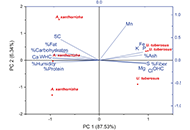 Proximal characteristics, phenolic compounds profile, and functional properties of Ullucus tuberosus and Arracacia xanthorrhizaOpen AccessOriginal ArticleAim: The Andean tubers Ullucus tuberosus and Arracacia xanthorrhiza are of great international importance due to their nutritional value (carbohydrates, fiber), functional and phenolic compounds. [...] Read more.Steffanny Sanchez-Portillo ... Raúl Rodríguez-HerreraPublished: November 18, 2024 Explor Foods Foodomics. 2024;2:672–686
Proximal characteristics, phenolic compounds profile, and functional properties of Ullucus tuberosus and Arracacia xanthorrhizaOpen AccessOriginal ArticleAim: The Andean tubers Ullucus tuberosus and Arracacia xanthorrhiza are of great international importance due to their nutritional value (carbohydrates, fiber), functional and phenolic compounds. [...] Read more.Steffanny Sanchez-Portillo ... Raúl Rodríguez-HerreraPublished: November 18, 2024 Explor Foods Foodomics. 2024;2:672–686
DOI: https://doi.org/10.37349/eff.2024.00058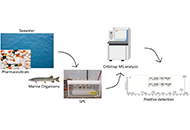 Detection of pharmaceuticals and their transformation products in seawaters using off-line solid phase extraction and liquid chromatography-high resolution mass spectrometryOpen AccessOriginal ArticleAim: Fast urbanization of free land, industrial progress, and improvement of human life quality, have led to increased consumption of different chemical substances recognized as emerging contaminants (ECs) that are chemicals posin [...] Read more.Aggeliki Kalogeropoulou ... Triantafyllos AlbanisPublished: November 29, 2024 Explor Foods Foodomics. 2024;2:767–787
Detection of pharmaceuticals and their transformation products in seawaters using off-line solid phase extraction and liquid chromatography-high resolution mass spectrometryOpen AccessOriginal ArticleAim: Fast urbanization of free land, industrial progress, and improvement of human life quality, have led to increased consumption of different chemical substances recognized as emerging contaminants (ECs) that are chemicals posin [...] Read more.Aggeliki Kalogeropoulou ... Triantafyllos AlbanisPublished: November 29, 2024 Explor Foods Foodomics. 2024;2:767–787
DOI: https://doi.org/10.37349/eff.2024.00061
This article belongs to the special issue Metrological Aspects in the Analysis of Nutrients, Functional Compounds, Additives and Contaminants in Food and Feed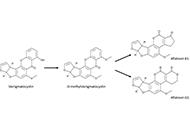 Analytical methodologies for the determination of sterigmatocystin in food and current concentration levelsOpen AccessReviewSterigmatocystin (STE) is a possible human carcinogenic compound (2B) according to the International Agency for Research on Cancer classification. Structurally, STE is a precursor to aflatoxins, sha [...] Read more.Olga Pardo, Francesc A. Esteve-TurrillasPublished: November 18, 2024 Explor Foods Foodomics. 2024;2:687–706
Analytical methodologies for the determination of sterigmatocystin in food and current concentration levelsOpen AccessReviewSterigmatocystin (STE) is a possible human carcinogenic compound (2B) according to the International Agency for Research on Cancer classification. Structurally, STE is a precursor to aflatoxins, sha [...] Read more.Olga Pardo, Francesc A. Esteve-TurrillasPublished: November 18, 2024 Explor Foods Foodomics. 2024;2:687–706
DOI: https://doi.org/10.37349/eff.2024.00059
This article belongs to the special issue Food Contaminants: Analysis, Occurrence and Risk Assessment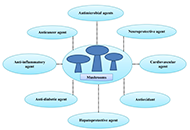 A concise review: edible mushroom and their medicinal significanceOpen AccessReviewIn many areas of human life, including food, health, culture, and religion, mushrooms have had a significant impact. Most people eat mushrooms for their flavor and texture. Recently, they have gained [...] Read more.Jaya P. Ambhore ... Bhavana A. ShendePublished: May 17, 2024 Explor Foods Foodomics. 2024;2:183–194
A concise review: edible mushroom and their medicinal significanceOpen AccessReviewIn many areas of human life, including food, health, culture, and religion, mushrooms have had a significant impact. Most people eat mushrooms for their flavor and texture. Recently, they have gained [...] Read more.Jaya P. Ambhore ... Bhavana A. ShendePublished: May 17, 2024 Explor Foods Foodomics. 2024;2:183–194
DOI: https://doi.org/10.37349/eff.2024.00033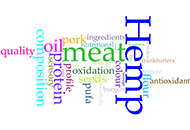 Review of hemp components as functional feed and food ingredients: impact on animal product quality traits and nutritional valueOpen AccessReviewThis review examined the potential of hemp components as functional feed and food ingredients, focusing on their impact on the quality and nutritional value of animal products. Following hemp legali [...] Read more.Georgios Papatzimos, Eleni KasapidouPublished: November 11, 2024 Explor Foods Foodomics. 2024;2:626–650
Review of hemp components as functional feed and food ingredients: impact on animal product quality traits and nutritional valueOpen AccessReviewThis review examined the potential of hemp components as functional feed and food ingredients, focusing on their impact on the quality and nutritional value of animal products. Following hemp legali [...] Read more.Georgios Papatzimos, Eleni KasapidouPublished: November 11, 2024 Explor Foods Foodomics. 2024;2:626–650
DOI: https://doi.org/10.37349/eff.2024.00055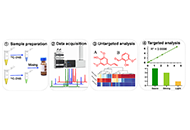 Untargeted and quantitative analyses of amine and phenol compounds in Baijiu via chemical isotope labelingOpen AccessOriginal ArticleAim: The aim of this study is to comprehensively investigate the distribution of amine and phenol compounds in different flavors of Baijiu. Methods: 12C-/13C-dansyl chloride labeling was [...] Read more.Xiaoyu Xie ... Guowang XuPublished: June 30, 2023 Explor Foods Foodomics. 2023;1:72–82
Untargeted and quantitative analyses of amine and phenol compounds in Baijiu via chemical isotope labelingOpen AccessOriginal ArticleAim: The aim of this study is to comprehensively investigate the distribution of amine and phenol compounds in different flavors of Baijiu. Methods: 12C-/13C-dansyl chloride labeling was [...] Read more.Xiaoyu Xie ... Guowang XuPublished: June 30, 2023 Explor Foods Foodomics. 2023;1:72–82
DOI: https://doi.org/10.37349/eff.2023.00007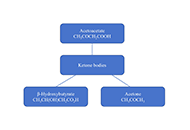 The challenges associated with a ketogenic diet: a narrative reviewOpen AccessReviewThe so-called ‘ketogenic diet’ aimed to limit energy derived from carbohydrates, has many variations which cause confusion in the literature and beyond. For ‘intractable’ epilepsy (when seiz [...] Read more.Xin Qi, Richard TesterPublished: January 16, 2025 Explor Foods Foodomics. 2025;3:101065
The challenges associated with a ketogenic diet: a narrative reviewOpen AccessReviewThe so-called ‘ketogenic diet’ aimed to limit energy derived from carbohydrates, has many variations which cause confusion in the literature and beyond. For ‘intractable’ epilepsy (when seiz [...] Read more.Xin Qi, Richard TesterPublished: January 16, 2025 Explor Foods Foodomics. 2025;3:101065
DOI: https://doi.org/10.37349/eff.2025.101065
This article belongs to the special issue Ketogenic Diet as Medical Nutrition Therapy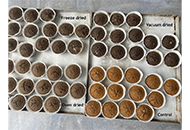 Spent coffee grounds as a sustainable coffee flavouring ingredient in muffinsOpen AccessOriginal ArticleAim: United Nations calls for actions to meet future challenges, and industries and governments need to look for new solutions. Coffee is one of the largest industries in the world, and spent cof [...] Read more.Sina Breian Solberg, Svein Øivind SolbergPublished: January 17, 2025 Explor Foods Foodomics. 2025;3:101066
Spent coffee grounds as a sustainable coffee flavouring ingredient in muffinsOpen AccessOriginal ArticleAim: United Nations calls for actions to meet future challenges, and industries and governments need to look for new solutions. Coffee is one of the largest industries in the world, and spent cof [...] Read more.Sina Breian Solberg, Svein Øivind SolbergPublished: January 17, 2025 Explor Foods Foodomics. 2025;3:101066
DOI: https://doi.org/10.37349/eff.2025.101066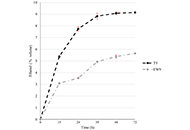 Exploring the potential of triticale lines for bioethanol productionOpen AccessOriginal ArticleAim: Triticale is a well adaptable crop, tolerant of disease and abiotic stresses, and able to grow with good yields even in poor soil, thus representing a good choice to develop a new industrial [...] Read more.Arianna Latini ... Patrizia GaleffiPublished: October 21, 2024 Explor Foods Foodomics. 2024;2:613–625
Exploring the potential of triticale lines for bioethanol productionOpen AccessOriginal ArticleAim: Triticale is a well adaptable crop, tolerant of disease and abiotic stresses, and able to grow with good yields even in poor soil, thus representing a good choice to develop a new industrial [...] Read more.Arianna Latini ... Patrizia GaleffiPublished: October 21, 2024 Explor Foods Foodomics. 2024;2:613–625
DOI: https://doi.org/10.37349/eff.2024.00054
This article belongs to the special issue Metrological Aspects in the Analysis of Nutrients, Functional Compounds, Additives and Contaminants in Food and Feed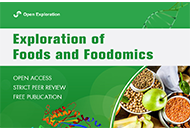 Exploration of Foods and Foodomics: a new adventureOpen AccessEditorialAlejandro Cifuentes, Elena IbáñezPublished: March 01, 2023 Explor Foods Foodomics. 2023;1:1–4
Exploration of Foods and Foodomics: a new adventureOpen AccessEditorialAlejandro Cifuentes, Elena IbáñezPublished: March 01, 2023 Explor Foods Foodomics. 2023;1:1–4
DOI: https://doi.org/10.37349/eff.2022.00001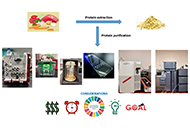 Separation methods for food protein purification and analysisOpen AccessReviewThe extraction, separation, and purification of dietary proteins from a variety of food sources are crucial for their targeted use in food applications. To achieve this, proteins should be effectively separated from non-protein co [...] Read more.Anushi Madushani Wijethunga, Chijioke EmenikePublished: July 30, 2024 Explor Foods Foodomics. 2024;2:391–407
Separation methods for food protein purification and analysisOpen AccessReviewThe extraction, separation, and purification of dietary proteins from a variety of food sources are crucial for their targeted use in food applications. To achieve this, proteins should be effectively separated from non-protein co [...] Read more.Anushi Madushani Wijethunga, Chijioke EmenikePublished: July 30, 2024 Explor Foods Foodomics. 2024;2:391–407
DOI: https://doi.org/10.37349/eff.2024.00043
This article belongs to the special issue Food Authenticity and Emerging Challenges of Novel Food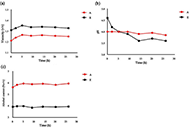 Sustainable alternative of palm wine analogue from different tiger nut milk-sugar syrup blends for local productionOpen AccessOriginal ArticleAim: The unfermented pale-yellow exudates (“palm sap”) emerge from tapped unopened spathe of mostly oil palm (Elaeis guineensis) and raphia palm (Raphia hookeri). Besides, tiger nut milk (Kun [...] Read more.Adindu O. Onyeodili ... Raquel P.F. GuinéPublished: January 24, 2025 Explor Foods Foodomics. 2025;3:101069
Sustainable alternative of palm wine analogue from different tiger nut milk-sugar syrup blends for local productionOpen AccessOriginal ArticleAim: The unfermented pale-yellow exudates (“palm sap”) emerge from tapped unopened spathe of mostly oil palm (Elaeis guineensis) and raphia palm (Raphia hookeri). Besides, tiger nut milk (Kun [...] Read more.Adindu O. Onyeodili ... Raquel P.F. GuinéPublished: January 24, 2025 Explor Foods Foodomics. 2025;3:101069
DOI: https://doi.org/10.37349/eff.2025.101069
This article belongs to the special issue Food Authenticity and Emerging Challenges of Novel Food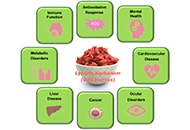 From botany to bedside: a review of the health benefits of Lycium barbarum as a functional foodOpen AccessReviewNative to East Asia and predominantly cultivated in regions such as the Ningxia Hui and Xinjiang Uyghur Autonomous Regions of China, Lycium barbarum (L. barbarum), commonly known as goji berry, has [...] Read more.Alois Berisha ... Tao ZhangPublished: January 25, 2025 Explor Foods Foodomics. 2025;3:101070
From botany to bedside: a review of the health benefits of Lycium barbarum as a functional foodOpen AccessReviewNative to East Asia and predominantly cultivated in regions such as the Ningxia Hui and Xinjiang Uyghur Autonomous Regions of China, Lycium barbarum (L. barbarum), commonly known as goji berry, has [...] Read more.Alois Berisha ... Tao ZhangPublished: January 25, 2025 Explor Foods Foodomics. 2025;3:101070
DOI: https://doi.org/10.37349/eff.2025.101070
This article belongs to the special issue Natural Products in Health and Disease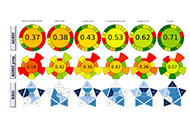 Sustainability assessment in food analysis: the application of Green Analytical Chemistry tools to phthalate residue analysis in edible oilsOpen AccessShort CommunicationEdible oils are essential in daily diet due to their high contribution of fatty acids, fat-soluble vitamins, and triglycerides. During the processes of growing, processing, storage, transport, or pa [...] Read more.Daniel Gallart-MateuPublished: November 12, 2024 Explor Foods Foodomics. 2024;2:651–658
Sustainability assessment in food analysis: the application of Green Analytical Chemistry tools to phthalate residue analysis in edible oilsOpen AccessShort CommunicationEdible oils are essential in daily diet due to their high contribution of fatty acids, fat-soluble vitamins, and triglycerides. During the processes of growing, processing, storage, transport, or pa [...] Read more.Daniel Gallart-MateuPublished: November 12, 2024 Explor Foods Foodomics. 2024;2:651–658
DOI: https://doi.org/10.37349/eff.2024.00056
This article belongs to the special issue Food Contaminants: Analysis, Occurrence and Risk Assessment -
